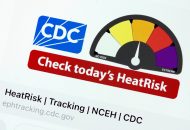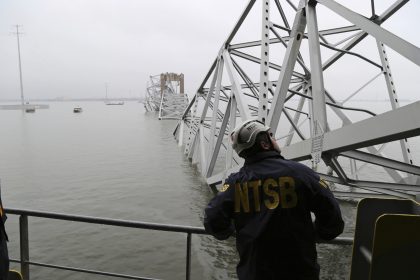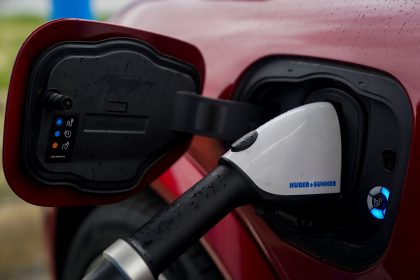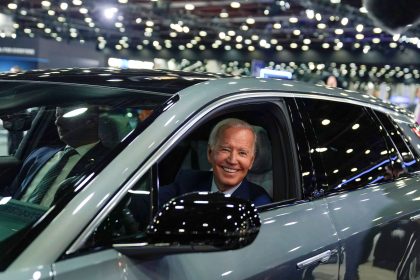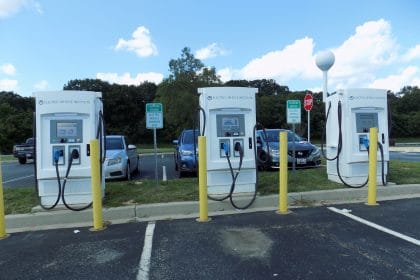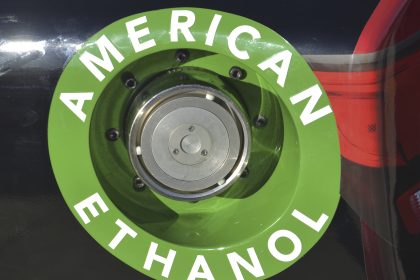New Laws Could Protect Drivers From Highway ‘Ice Missiles’
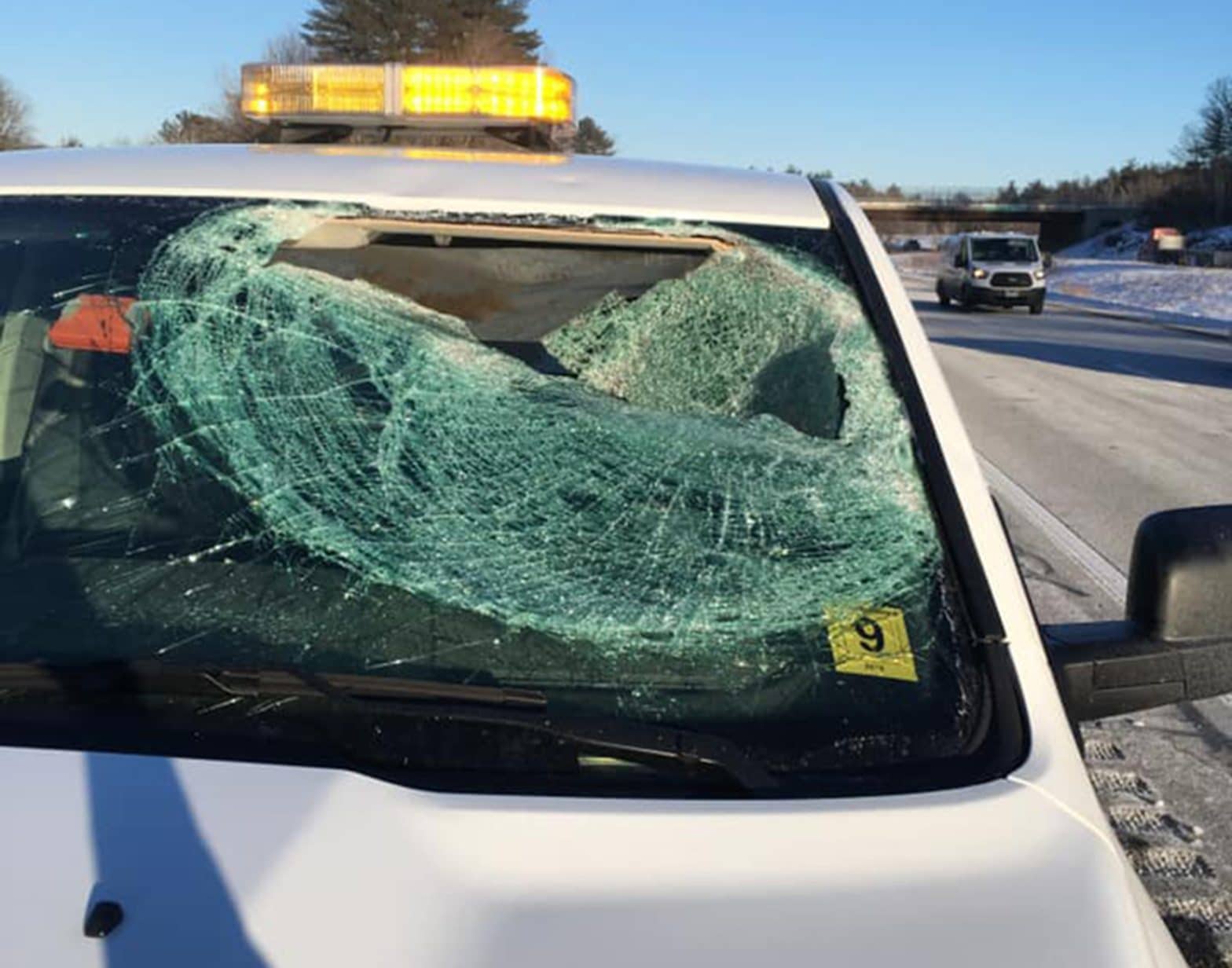
WASHINGTON — Bill Taylor was driving home from work in New Hampshire last January when a chunk of ice the size of a shoebox broke off the top of a storage container hauled by a truck ahead of him, crashed through his windshield and hit him squarely in the forehead.
A good Samaritan stopped and called 911. An ambulance took Taylor to the emergency room. He had a 3-inch gash on his forehead and broken glass embedded in his hands and face. He received about a dozen stitches.
“It could have been worse,” said Taylor, 42, a road and bridge construction inspector for the New Hampshire Department of Transportation. “I could have died if it had hit me in the neck and throat.”
Taylor was the victim of an “ice missile” incident, in which sheets or blocks of snow and ice fly off roofs or windshields of cars and trucks, endangering those in vehicles behind them. Ice missiles can distract drivers and cause them to swerve into other cars. And they can crack windshields, and sometimes cause injuries — even deaths.
“They don’t call them missiles for nothing. They create significant hazards,” said Maureen Vogel, spokeswoman for the National Safety Council, an Itasca, Illinois-based organization focused on eliminating preventable deaths. “Even if they don’t result in an injury, it’s terrifying, especially if you’re going down the highway at 65 miles an hour and you see something flying toward your windshield.”
Police and safety officials encourage drivers to keep their vehicles’ roofs and windshields clear of snow and ice, but not everyone takes heed. A year ago, for example, state troopers in Connecticut warned of an “alarmingly high” number of missiles flying off vehicles after a late January snow and ice storm.
In many states, it’s not illegal to leave the snow there, though some legislators are trying to change that. Many in the trucking industry oppose the efforts, worrying about the dangers of requiring operators to remove snow and ice from the tops of large rigs.
“It’s very difficult to get on top of the trailer and remove that snow and ice,” said Abigail Potter, a safety policy manager at the American Trucking Associations, a trade group. “It can result in workplace injuries.”
At least four states — Delaware, New York, Pennsylvania and Vermont — have bills pending that would require drivers to clear off excessive ice and snow and would impose fines for violators, said Samantha Bloch, a policy associate at the National Conference of State Legislatures.
Some states allow police to ticket motorists if their vehicle is considered a danger or the driver can’t see through an icy or snowy windshield, Bloch said. But only a handful have laws specific to ice missiles.
Connecticut motorists can be fined $120 if they don’t remove accumulated snow or ice. If a missile causes personal injury or property damage, the penalty is $200 to $1,000 for non-commercial drivers and $500 to $1,250 for commercial drivers.
Last year, Connecticut State Police issued 372 citations to non-commercial drivers and nearly 150 to commercial drivers, according to spokesman Trooper Josue Dorelus.
“It’s a huge concern for us,” Dorelus said. “We know that whenever chunks of ice or snow go flying from vehicles traveling at 55, 65 or even 75 miles an hour, it becomes a hazard for our motorists.”
New Jersey has a similar statute. Pennsylvania’s ice missile law applies only if snow or ice strikes another car or person and causes serious injury or death.
New Hampshire’s law refers to negligent driving and doesn’t mention snow or ice, but legislators intended for police to use it to cite drivers who don’t remove built-up ice or snow from their vehicles. It’s called “Jessica’s law,” named after a woman killed in 1999 when ice from a tractor-trailer hit a truck that ended up colliding with her car.
Federal officials don’t keep data on crashes, injuries or deaths caused by ice missiles, according to the National Highway Traffic Safety Administration.
But police and transportation safety advocates say the incidents are not uncommon in northern states and those that get heavy snow and sleet.
Among such incidents:
Four people were injured in Massachusetts earlier this month when ice dislodged from a truck and smashed through the windshield of a pickup.
A Minnesota woman suffered facial and head injuries after a huge piece of ice flew off a pickup truck and trailer last month and shattered her windshield.
A man in Pennsylvania was severely injured last January when a car in which he was a passenger was struck by an ice chunk that flew off a tractor trailer and smashed into the windshield.
In the past few years, several states, including Maryland, Massachusetts and Virginia, have considered bills requiring motorists to clear off ice and snow and allowing police to ticket those who don’t. None has passed.
In Pennsylvania, Democratic state Sen. Lisa Boscola has spent years trying to expand the current law to require drivers to clear accumulated ice and snow, and establish fines for violators — even when no one gets injured. Those efforts haven’t succeeded. The Senate passed a bill in 2018 that died in the House Transportation Committee.
Boscola keeps trying. In October, the Senate passed a new measure, which is in the House committee.
“It’s been very frustrating. The trucking industry keeps pushing back,” Boscola said. “I’m constantly on the Senate floor talking about snow and ice and the importance of removing it from vehicles.”
Boscola started her crusade after a flying chunk of ice killed a woman in her district in 2005. Boscola sponsored the original bill that became law but wants to make it more preventive.
Kevin Stewart, president of the Pennsylvania Motor Truck Association, said his group opposed Boscola’s bill in 2018. Among its concerns was that the legislation would put truckers at risk because they’d have to climb 13 feet, 6 inches to remove ice and snow.
“You fix one safety issue and create another one,” Stewart said.
Stewart said his group does not oppose Boscola’s current bill because she has put in more safeguards to protect truckers and companies, such as an exemption if complying with the law would be a threat to the driver’s health and safety or violate workplace safety regulations.
In New York, Democratic Assemblyman Michael DenDekker, who sponsored a bill last February that hasn’t been taken up by the Transportation Committee, said he, too, has gotten pushback from the trucking industry, as well as labor unions and groups representing seniors and disabled people.
“The advocacy groups have been very vocal here in the state of New York,” he said, “and probably have convinced some of my colleagues not to support it as it is written.”
DenDekker, a retired New York City Department of Sanitation worker and union member, said he understands the apprehension shared by labor unions and truckers, who prefer that employers be responsible for clearing ice and snow because they don’t want their drivers to get hurt.
“I’m a Teamster,” he said. “I get it.”
Despite the opposition, DenDekker said he’s moving ahead to try to “solve the missile crisis.”
“I care very deeply about this,” he said. “I’ve plowed the streets when there were blizzards and I’ve seen snow accumulate on top of vehicles and big blocks fall off. When it’s below freezing, it is not a good thing.”
Ice and snow removal also can be dangerous and expensive for truckers.
Potter, of the trucking trade group, said about 97% of the industry has fewer than 20 trucks and can’t afford costly fixed snow-removal systems, which can run tens of thousands of dollars.
Some larger companies do have devices at their terminals that truckers can drive through that push off ice and snow, she said. And truck owner-operators can use brushes or scrapers designed to clear off their trailer roofs, but they’re not always effective, she added. Do-it-yourself brushes typically cost less than $200.
“You’re not always going to clear off everything with one of those brushes because there probably is not enough leverage,” Potter said. “Ice may be much more difficult.”
The trucking industry thinks the federal government should address the snow-removal issue.
Nearly a decade ago, a national council of trucking association executives and dozens of state associations wrote to the Federal Motor Carrier Safety Administration and the National Highway Traffic Safety Administration expressing concern about truck driver safety in clearing vehicles and other challenges. It urged them to determine the scope of the problem and develop “practical, effective, and economically viable approaches to address it.”
The federal agencies have yet to respond, according to Sean McNally, the trucking trade group’s spokesman.
Potter said her group would like to see the federal government and states invest in fixed snow-removal equipment that could be placed at rest areas, truck stops and weigh stations.
But Boscola, the Pennsylvania state senator, said there’s lots of new technology the trucking industry can use instead to fix the problem.
“There’s everything from roof heating systems to ice scraper systems. I don’t buy the excuses anymore that they’d have to climb on top of the rig,” she said. “We have to act now to protect the safety of drivers on the road.”
———
©2020 Stateline.org
Visit Stateline.org at www.stateline.org
Distributed by Tribune Content Agency, LLC.













